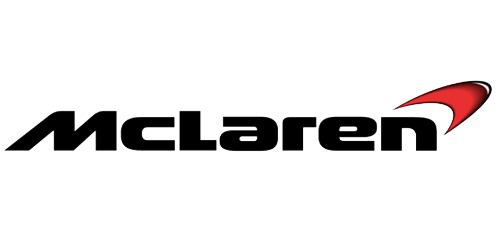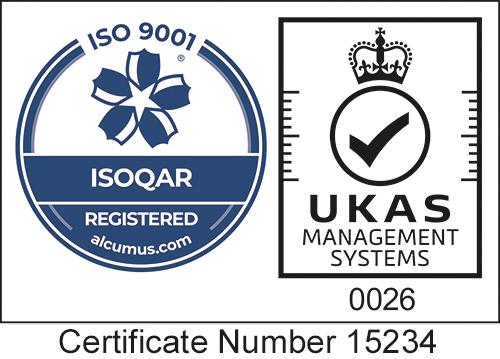Which vacuum pump should I choose?
Henniker Plasma’s range of vacuum plasma treatment systems (HPT and Nebula models) include a suitable vacuum pump which is required for the low pressures needed during plasma operation.
There are various types of vacuum pump available to the user and the most suitable of these is determined in consultation with Henniker’s technical sales department who have many years’ experience of process vacuum and plasma technology. This document aims to help you to understand the difference between the various pump options and how to decide which one is best suited for your specific process.
The main considerations relating to the choice of vacuum pump are, (i) process compatibility, (ii) pumping speed, (iii) lab or work area environment and (iv) cost.
(i) Process Compatibility

Oxidants
Plasma processing can be performed with a range of gases depending on the material being processed and the desired outcome of the process. Typical process gases include air, oxygen, argon and hydrogen, either in pure form or mixed. Air and oxygen are by far the most common gases used for routine cleaning and surface activation.
When working with air or inert gases, there are usually no compatibility issues to be considered.
If oxygen is used in pure form, or as part of a mixture where the percentage of oxygen is above 25% by volume, then vacuum pumps which are lubricated with hydrocarbon oil should not be used due to the risk of flammability. It’s important to note that this is still the case if normally the oxygen percentage is below 25% by volume but could rise above this figure under fault condition.
It’s possible to dilute the oxidant to a safe concentration via the gas ballast port of a hydrocarbon oil rotary vane pump but this should only be done with an inert gas (such as dry nitrogen) and must be carried out under strict monitoring conditions using a safety design which stops the flow of oxidant in the event that either the inert gas flow is interrupted or the oxidant flow increases.
This approach is only feasible for low flow rates of oxidant gases otherwise the pump cannot cope with the additional flow of gas from the diluent.
A safer approach when using oxygen above 25% volume is to use a PFPE lubricated vacuum pump or a dry vacuum pump, which has no lubricants at all. PFPE oil is chemically inert and will not react with oxygen. Dry vacuum pumps use a rotating tip seal and do not contain any oil.
Flammable Gases
Many flammable gases such as hydrogen are explosive in certain concentrations in the presence of an oxidant if an ignition source is also present. All vacuum pump types can pump hydrogen, but in every case, it must be diluted in the vacuum pump to a percentage below the safe level prior to being compressed back to atmospheric pressure at the vacuum pump exhaust port. Flame arresters should also be used as part of an overall system safety design and ATEX guidance should be consulted where required.
Corrosive Gases
Some gases, such as ammonia, are corrosive to the internal components and surfaces of standard vacuum pumps and corrosion-resistant versions of each type of pump are available and should always be chosen where appropriate. Special care should also be taken to avoid moisture ingress which can accelerate corrosive effects and an inert gas purge should be used as part of the shut-down procedure in order to flush the pump.

(ii) Pumping Speed
As the name suggests this is simply the rate at which the vacuum pump removes gas from the vacuum chamber. All pumps will eventually reach the same ultimate vacuum level, however, a pump with a higher pumping speed will reach that point faster than one with a lower pumping speed. Higher pumping speed, therefore, means faster pump downtime, which in turn means a faster overall process time. If the plasma system is being used e.g. in a laboratory where the throughput of samples is quite small, then a fast process may not be particularly important. If being used in a high throughput production setting, however, then the pump downtime can be important if the plasma stage (the time for which the plasma is on) is short, because the pump downtime then becomes the longest stage of the overall process.
Figure 1 below shows the pump down curves for the HPT-200 benchtop plasma system for pumps with nominal pumping speeds of 3m3/hr and 5m3/hr respectively.

Figure 1: Pump down curves for the HPT-200 with two different pump speeds.
The 5m3/hr pump reaches 0.1mbar in 1min12seconds, whereas the 3m3/hr pump takes 1min30seconds to reach the same vacuum level. This is a relatively small difference and may not be a concern in many cases however if overall process time and throughput are a consideration then the faster pump should be chosen.
Figure 2 shows the equivalent data for the larger HPT-500 benchtop plasma system. The 8m3/hr pump takes 2m50s to reach 0.1mbar whereas the 12m3/hr pump reaches this level approximately one minute sooner. In this case, the larger pump would be preferred in most cases.

Figure 2: Pump down curves for the HPT-500 with two different pump speeds.
The above data was measured without any samples present in the plasma chamber. The vast majority of polymers, glass, metals and ceramics are low porosity and do not outgas in the vacuum chamber. When high porosity samples are plasma-treated however they can present a significant gas load to the vacuum pump due to the high outgassing rate. The pump will take longer to remove this additional gas load and therefore the pump downtime will be extended. In these cases, a larger pumping speed would also be recommended.
(iii) Lab or Work Area Environment
The environment in which the vacuum pump will be located is also important when considering pump options. For example, if the plasma system and vacuum pump will be placed in a clean room, a dry vacuum pump would normally be preferred in order to minimise the effects on air quality due to oil mist escaping from the vacuum pump exhaust. This can also be addressed with a suitable vacuum pump exhaust filter which is supplied as standard on all pumps delivered with Henniker plasma systems.
If the vacuum pump is to be situated outside of the cleanroom, via a bulkhead for example, then the additional length of vacuum line between the plasma unit and the pump needs to be considered as this may create a conductance limitation which reduces the effective pumping speed. Larger pumps and/or larger bore vacuum lines should be used if required.

(iv) Pump Price
The cost of the vacuum pump increases through models with higher pumping speeds. PFPE pumps are more expensive than hydrocarbon oil pumps of the same pumping speed. Dry vacuum pumps are typically more expensive than PFPE pumps and similarly for the corrosion-resistant version of any pump with the same nominal pumping speed.

Final Words
The most suitable vacuum pump is, therefore, one which is chemically compatible and will meet the required throughput demands whilst being suitable for the laboratory or workplace environment, and also within the allocated budget.
Click here to download the lets talk about



















